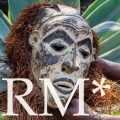Amber Aranui at Te Papa and Research Fellow and Co-director SPAR (Southern Pacific Archaeological Research) and Monica Tromp from Ōtākou Whakaihu Waka (University of Otago) write:
Museums in places like Aotearoa New Zealand could be seen as a colonial construct where the coloniser dominates the indigenous ‘Other’ through their telling of the history of the ‘things’ it has collected or acquired into its realm. Not having the stories or history of taonga Māori, museums have talked for them from a form and function perspective.
One technique that we are using to start recovering the lost stories is called ZooMS (Zooarchaeology by Mass Spectrometry or Peptide Mass Fingerprinting). In our project called Developing a minimally invasive species identification protocol, we are focusing on taonga made from or thought to be made from marine mammals, including whales, dolphins, seals, and sea lions.
The results enable us to better understand what species were used to make different types of taonga held in our collections, better understand their role in Te Ao Māori, and provide valuable information that can be added to the biography of the taonga we care for, further adding to their story.
We need ask several questions:
- The first of which is what type of animal was used to make this fishhook?
- Was it an animal that is easily accessible to certain communities in Aotearoa?
- Are there places around New Zealand that this animal is not found?


